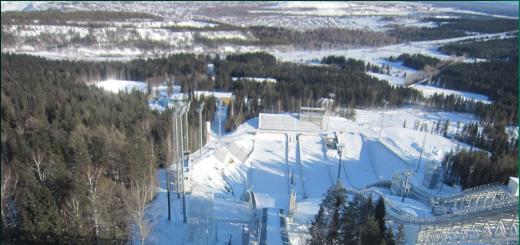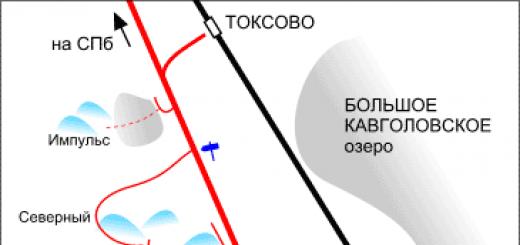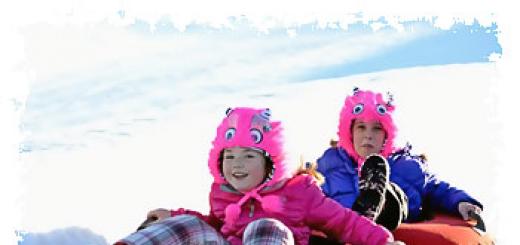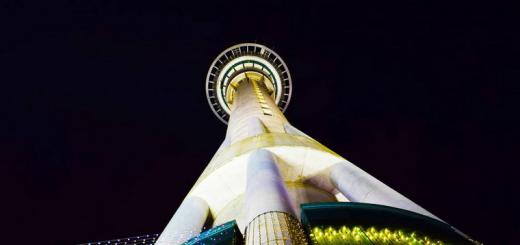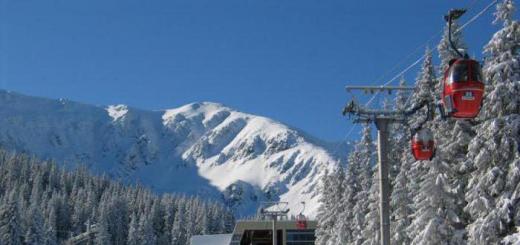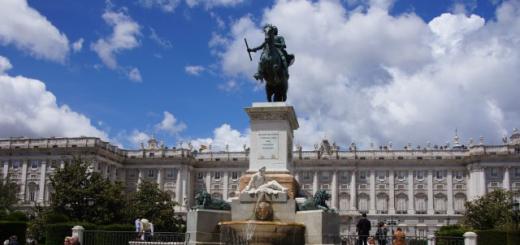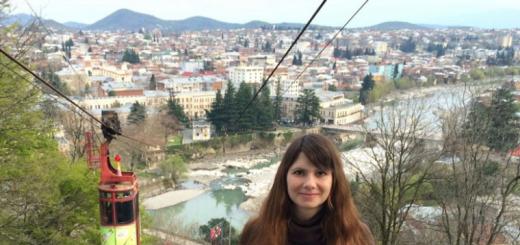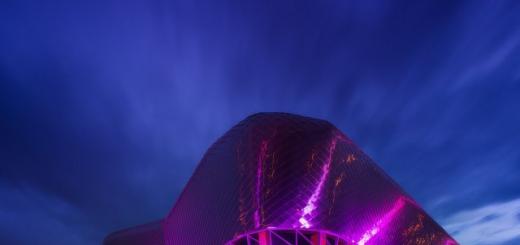From time immemorial, Russian and foreign sailors began to explore the islands located in the Pacific Ocean. These natural complexes are so amazing and unusual that they are considered to be isolated continents with their own culture and way of life. From school, we all remember that in Oceania, after Greenland is Papua New Guinea.
The island is washed by several seas: New Guinea, Solomon, Coral, as well as the Gulf of Papua. Close study natural resources, Miklouho-Maclay N.N., a Russian biologist and navigator, who made a significant contribution to geography, history and science, was engaged in the local culture and indigenous population. Thanks to this man, the world learned about the existence of the wild jungle and distinctive tribes.
True, tours to the island in Oceania are not in great demand, while they remain a rarity. But travelers who have visited the local jungle, untouched by civilization, recall their vacation with rapture and delight. Rich vegetation, exotic animal world, amazing landscapes, a variety of languages, customs and cultures leave a lasting impression in the memory. Our publication is dedicated to this state.
Geographical description of the island of New Guinea
A tropical island is in the waters The Pacific, connects two parts of the world: Asia and Australia. Since 1975 it has been an independent state, also part of the British Commonwealth and is a member of the UN. Its capital is Port Moresby. The origin of the island of New Guinea is mainland. Almost the entire territory is covered with massive hills and rocky ridges.
Most of them are of volcanic origin, rising 3000 meters above sea level. According to scientific data, the most high mountain is considered Wilhelm, which reaches 4509 meters. Between the hills, there are wide basins filled with water, densely planted with tropical trees.
Several rivers flow on the island: Ramu, Sepik, Markham, Purari, Fly. Scientists engaged in the geological research of the island claim that the continent has a high seismic activity. The last eruption was recorded in the last century, during which thousands of people were injured, as well as huge damage to agriculture.
Island of New Guinea: population
Life on tropical islands originated thousands of years ago, no one can name the exact date. The last census took place in 1900, at that time the number was about 10 million people. The indigenous inhabitants are the Papuans belonging to the equatorial race. In addition to the Melanesians, as this nation is also called, Asians and even Europeans live.

Lack of civilization, jobs, as well as unfavorable living conditions and the presence of a high crime rate force the aborigines to migrate from the "mainland" New Guinea. The island lives by its own customs and laws. Papuans create clans, tribes, elect elders, without whom important tasks and decisions cannot be made.
The main occupation of the population is agriculture. Wild tribes plow the land, plant palms with bananas, coconuts, and pineapples. Fishing and hunting are no less popular. Some Aboriginal people mine precious metals and then sell them on the black market.
Climatic conditions
The huge masses of water and the small size of the land had an impact on the climate in general. In the north, a humid equatorial climate is noted, characterized by heavy rainfall and slight winds. Summer temperature regime ranges from +30 ... + 32 ° С, slightly decreases at night.

The southern part of the mainland is ruled by the subequatorial climate zone. During the winter months (January-February) strong winds prevail on the island of Papua New Guinea. The island, or rather the southeast (May-August) and the central part, are heavily flooded with tropical rains.
The rest of the coastal area (lowland) suffers drought until late autumn. In areas with high mountains and the ridges receive a small amount of precipitation, since the hills serve as a protective barrier in the way of cold air masses and rains.
Economic situation
The relief of the ridges prevents the construction of highways and connecting paths. Until now, there is no ground communication with the major New Guinea. The island has only air links with the Pacific regions. To maintain and develop the economy, the state in Oceania regularly receives financial support from Australia.

However, the infrastructure remains at an antediluvian level. The main reason is the lack of compliance with the law on the part of local residents... Crime and civil strife are raging in rural areas. In order to protect their property from robbery and devastation, residents create communities.
The main activity of the population is agriculture. Thus, market relations are established between tribes and regions. Sweet potatoes and tea are cultivated in the mountainous regions; vegetables, bananas, yams, taro are cultivated in the lowlands. They grow various cereals, fruit, coffee and chocolate trees. Livestock breeding is practiced. Papua New Guinea is abundant in mineral resources. The mining industry is actively developing.
Flora
The territory of the island of New Guinea is covered with evergreen savannas. In the jungle, valuable plant species and relict trees grow: sago and coconut palms, melon and mango, rubber plants, ficuses, bamboos, pandanuses, casuarins. The forests include pines and ferns. And on the marshland, mangrove plantations grow. On the banks of the rivers, you can see thickets of sugar cane.

Fauna
The animal world is rich and varied. Alligators, dangerous and poisonous snakes, as well as lizards and chameleons are found in local rivers. The fauna is represented by amazing insects, exotic birds and reptiles. Birds of paradise, cassowaries, large parrots live on the mainland. Large turtles crawl along the coast. In the forests there are marsupial badgers, kangaroos, and couscous. Local residents breed animals familiar to our region: pigs, cows, horses, goats and other livestock.

Tourist focus
Avid travelers know where the island of New Guinea is, and therefore tend to get here in the summer months to see the colorful and diverse world of the jungle. In warm weather, enchanting festivals with national aboriginal dances are organized here. Many are attracted sightseeing vacation in the wild jungle with a local guide, others - acquaintance with the sights of the nearby resorts.
Things to do?
When purchasing a tour to Papua New Guinea, be sure to go diving. Every hotel and inn offers similar services. The waters of the Pacific Ocean are an unusually colorful world, teeming with coral reefs, amazing sea creatures, and large predators. Sunken ships and planes can be seen at the bottom of the ocean.

Surfing and windsurfing are also popular. The best beaches for this extreme activity are the coasts of the resorts Vevak, Madang, Vanimo, Alotau. It is allowed to fish in the coastal waters, which is what the guests of the island do. They manage to catch mackerel, giant carax, dogtooth tuna, barracuda, salmon, perch and many other trophies. Rafting, canoeing, kayaking, boat trips are in great demand.
Papua New Guinea - natural miracle world, concealing many mysteries and seducing with its resources. If you are not afraid of tropical mosquito bites and aggressive behavior of the Papuans, then feel free to purchase a tour to the picturesque island.
This state is located in the southwestern part of the Pacific Ocean and occupies the eastern part of New Guinea, as well as many nearby islands, as well as the Bismarck archipelago, part Solomon Islands... and others. For a long time it was a colony of European countries, recently Great Britain, whose influence is great here and now.
Papua New Guinea is a strange, mysterious country filled with aboriginal tribes and endlessly beautiful nature.
Immigrants from other lands reached Papua New Guinea from the Asian mainland more than 50 thousand years ago. Numerous waves of migration passed through the territory of these islands, going to Australia and the islands of Oceania. As a result, many unique ethnic groups have formed here, often isolated from each other.
The first of the Europeans to reach the western shores of Papua New Guinea in the 16th century were the Portuguese. They named it - "Ilhas dos Papuas" - the island of the Papuans. The name "New Guinea" was given to the island by the Dutch, who saw in the black local residents an analogy with the blacks of African Guinea. Europeans did not penetrate into the eastern part of New Guinea until the end of the 18th century. It is believed that they were afraid of the very warlike and cruel cannibals who ate Cook.
Slice of paradise
And now Papua New Guinea is practically a land of wild and unexplored nature, with harsh conditions and unique landscapes. The area of this country is slightly larger than Germany, but the local diversity of living beings and natural complexes can be compared with all of Eurasia.
Here you will find stifling areas of humid jungle, followed by cold mountainous terrain. Next to each other are centuries-old swamps and coral reefs, limestone cliffs and emerald green plains. Unique animals live here, from tiny tree kangaroos or birds of paradise to huge butterflies. It is this diversity, still completely untouched by man, that attracts thousands of researchers, anthropologists and travelers here.

Attractions Papua New Guinea
On the territory of Papua New Guinea, as you already understood, there are a lot of natural attractions. For example, the two-peaked volcano Giluwe, located in the Southern Highlands. The volcano has a height of 4368 meters and is the second highest peak in the country, and the highest in all of Oceania and Australia. Along its entire surface, there are alpine-like meadows.
The agricultural settlement of Cook, also known as the Cook Marshes, is a huge archaeological site. It is located in the West, in the highlands, at an altitude of more than one and a half kilometers above sea level and has an area of 116 hectares. Archaeological excavations and research have been carried out here since 1960.

Bayer Reserve is located 55 km from Mount Hagen, in the Bayer Basin
Papua has many natural river nature reserves, parks, inimitable and unique gardens.
A popular destination is Lake Kutubu (see photo above), which is home to several species of rare fish. It is located 800 meters above sea level in the Southern Highlands and covers an area of 49 km². The reservoir is surrounded by wetlands and swampy forests, which are protected by the state.
Varirata National Park, which is the first national park in the country, is located 42 km from the capital and covers more than a thousand hectares. Once this territory was a hunting ground for the tribes living here. The object of cult purpose is dedicated to these times - the “tree-house” of the Koiaris tribe.
The National Botanical Park in the capital is ranked among the main tourist attractions in the country. This place is regularly visited by thousands of tourists from all over the world, as well as locals from different regions. The park is known for its gigantic collection of orchids, hanging paths and a "plant map" of the country.
The next must-see must be the Gardens of Eden in the Foya Mountains - a unique rainforest untouched by civilization, isolated from the outside world, where there is not a single path or path.

The best place to experience local architecture, history, culture and nature can only be National Museum... All the diverse and rich heritage of the state is collected in this truly spiritual center. The museum is designed as a complex consisting of many rooms located in different parts of the capital.
Now in Papua
Over the past 100 years, the territory of Papua New Guinea has also been affected by the Second World War... Actually, the very name of the country appeared only in 1949, when its territory came under the control of Australia as a trust territory of the UN.
 Australians have taken steps to strengthen centralization in governance with the participation of local tribesmen. Stronger ties began to be established with the overpopulated mountainous regions. In 1953, the first road was built from the coast through the Kassam pass to the mountains. The administration sought to improve the systems of medical care and education, and religious missions carried out considerable work in this direction.
Australians have taken steps to strengthen centralization in governance with the participation of local tribesmen. Stronger ties began to be established with the overpopulated mountainous regions. In 1953, the first road was built from the coast through the Kassam pass to the mountains. The administration sought to improve the systems of medical care and education, and religious missions carried out considerable work in this direction.
The national political party Pangu Party was founded in 1967. After the 1972 elections, this party formed a coalition government, which achieved the country's independence on September 16, 1975. Nevertheless, Papua New Guinea is not always calm and now, there are separatists.
So if one of the wealthy Russian and tourists in general gets there, you need to find out where you can go and where not. It is far from Russia to go there, and it is clearly expensive. But where ours were not ... see for yourself:
There are not so many places on the planet that the ubiquitous tentacles of civilization have not reached. And, nevertheless, there is a place where the locals look at a flying plane as a deity and go to war against a neighboring tribe. It's about Papua New Guinea.
Of course it is unique country... Many cultures, languages, customs, landscapes, flora and fauna are intertwined here. As already mentioned, completely wild tribes live in the local jungle, whose decoration is still considered to be the presence in the hut of a collection of ... enemy skulls. Nevertheless, tourists have nothing to fear, since, firstly, they are always under supervision, and secondly, they do not fall under the category of enemies.
For hiking local valleys, mountains, waterfalls, rivers and swamps are great. But, of course, the main attraction is the underwater world of the seas surrounding this virgin country. Recently, Papua New Guinea has become one of the world leaders in attractiveness for diving enthusiasts, being, in addition, the birthplace of McDiving.
Most best season, in climatic terms, occurs here in the period from May to October, while it should be borne in mind that the climate can change even within a few tens of kilometers. In the summer, the country hosts a lot of events that attract tourists from all over the world.

Although the tribes inhabiting the country speak many dialects, English is the country's official language. So, with a tolerable possession of it, there will be no communication problems.
Of the sights, the capital should be highlighted - Port Moresby. Back in the 19th century, an English captain founded a settlement of his own name here, then various missionaries moored here, so little by little the village turned into a city. However, the capital experienced its most rapid growth during the Second World War. This was due to the fact that the largest American military base, as well as the fact that Port Moresby was the only surviving city in the country, the rest were swept to the ground. In general, the panorama sandwiched between the bay and mountain range of the capital, enchants with its beauty, revealing amazing beauty.
What to wish if the heating cannot cope with the heating of the apartment? An excellent option is wall-mounted air conditioners from well-known manufacturers Dantex or Daikin. Summer will come and they will just as well create a cool and fresh microclimate in the room.
In the south-western part of the capital, between the bays, there is Old city... It still has colonial buildings, evoking the atmosphere of the Victorian era, Kipling and the ubiquitous soldiers in red uniforms. Further south is the Paga hill, whose height is 99 meters, and already behind it an endless series of city beaches begins. It is worth noting that it is on the beaches that the main festivals and celebrations are held, during which locals demonstrate to tourists the breathtaking art of dance.
In the northern part of the city, there are administrative offices, the Parliament building built in the national style. Not far from the Parliament is the National Museum, which contains collections of exhibits on the culture, history, ethnography and geography of the country. Also in the area is the State University. A little to the west endless botanical gardens begin, in which more than 3000 orchids are collected. The area of the gardens is divided into several parts, each of which is a miniature version of a particular region of the country. Walking paths are made in the form of suspended wooden decks, so that a tourist can move around without fear of damaging one or another blade of grass or leaf.
In general, a tourist going to Papua New Guinea has the opportunity to feel like a discoverer, this alone is enough to hit the road!
Most people are familiar with large states - France, America, Germany. However, there are several countries like Guinea on the planet. All of them are important economic components of the whole world. The article examines the capitals of each Guinea, describes their potential and population. Attention will also be paid to the sights.
At school, few hours are devoted to studying these countries and their capitals. This question is quite interesting, because although they are united by one name, culture and history are completely different.
Portuguese guinea
This African colony existed for exactly 500 years, from 1474 to 1974. The capital of Portuguese Guinea is Bissau. Together with Kasheu, it was for a long time the center where the slave trade flourished. This name was given to the Portuguese possessions in 1879.
Initially, only the coast belonged to the indigenous people. At the very beginning of the 20th century, the Portuguese actively began to oppose the tribes that lived in the center of the continent. This resistance lasted long enough - in 1936 Bijagos passed into the possession of the Portuguese.
In 1956, the struggle for independence began, led by the PAIGK party. For a long time, it was conducted with the help of political discussions, and after five years it turned to armed clashes. In 1973, the independent Republic of Guinea-Bissau was proclaimed.
Bissau
Bissau is the capital of Guinea-Bissau. The city was formed in 1687. It covers an area of 78 sq. km. As of 2009, almost 390 thousand people lived here.
The city was founded by the inhabitants of Portuguese Guinea as a center for the slave trade. The choice of the site for its construction was influenced by the harbor, which was excellent for receiving various types of ships. Bissau is the main industrial center in its country.

Port Moresby
The capital of Papua New Guinea is Port Moresby. It is located on the coast of the country. The climate on this territory is dominated by the subequatorial marine. Cold and dry weather prevails from May to September. Drought periodically sets in this area. Such a peculiarity of the climate is characteristic of the territory in which the capital is located, it is subjected to such cataclysms once every 40 years. The maximum temperature is +31 ° С, the minimum is +23 ° С.
The flora of this city is typical for tropical forests. Here you can often find oaks, beeches and some other species that were brought by scientists from the European part of the planet.

Population of Port Moresby
As of 2012, the capital of Guinea is home to over 317,000 people. Mostly Papuans and Malanesians live here. They speak 700 languages among themselves. Europeans and Australians are also common in the city. A small segment of the population consists of Chinese.
Speaking about the official languages, it must be said that English, Tok-Pisin and Hiri-motu are recognized as the main ones. Newcomers in most cases use the first, the other two are used only by the indigenous people.
90% of the population are Christians. The capital of Guinea has also become a place of residence for Protestants (60%) and Catholics (30%).
Port Moresby culture
The Town Peninsula, which is part of the capital, is historic center... It attracts many tourists every year. In Town there is a fairly high hill, from which a stunning view of the entire city opens. The capital of Guinea in its center has buildings erected in the 19th century. The oldest building is the Ella Church (1890). She looks really aristocratic. Buildings of political importance are concentrated in the north. In 1984, a house was built here, where parliamentary sessions are held to this day. Previously, sports games were held in the capital, so you can admire a special complex. It is designed for several thousand people and is even currently functioning.

Conakry
The capital of the Republic of Guinea is Conakry. She was recognized as such in 1958. As a port, Conakry is located on the shores of one of the world's oceans. As of 2012, over 2 million people live here. The city is divided into communes and districts.
The capital of Guinea is the main city in the economic sphere of the country. It is named the center of industry. The food, textile, chemical and woodworking industries, as well as metalworking and fishing are developed here. Due to the fact that the city has access to the ocean, the port is the main mode of foreign trade of the state.
The architecture of the city began to develop at the end of the 19th century. Now it houses the Polytechnic Institute, several hotels, scientific centers, a stadium, museums, Botanical Garden... All these places attract tourists.
In the eastern part of the city there is an art museum, where all national symbols are located, in the north - the People's Palace. Theatrical performances are staged in it. Also in the city is the headquarters of the main party of the country. These are the places that attract tourists. The city administration takes care of the safety of each of them.
Papua New Guinea is an independent state in Oceania. It occupies the eastern part of the island of New Guinea, the northern part of the Solomon Islands, the Bismarck and Louisiana archipelago and more than two hundred other small reefs and islands in the southwestern Pacific Ocean.
The etymology of the name of the state is interesting. It comes from the Malay " daddy", Which is translated into Russian as" curly". The island received this name in 1526 from the Portuguese Menezes, who was surprised by the hair of the local population. Twenty years later, Iñigo Ortiz de Retes arrived on the island and gave the place the name of New Guinea. In his opinion, the locals were like the Guinean aborigines who lived in Africa.
The name of the country changed several times from the beginning of European colonization to the state's independence. Only in 1975 the island became officially called Papua New Guinea.
Capital |
Port Moresby |
|
Population |
6 187 591 people |
|
461.7 thousand km² |
|
|
Population density |
13 people / km² |
|
English, Tok Pisin, Hiri Motu |
|
|
Religion |
most of the population is Christian, the rest adhere to local traditional beliefs |
|
Form of government |
a constitutional monarchy |
|
Timezone |
|
|
International dialing code |
|
|
Domain zone on the Internet |
|
|
Electricity |
The islands of this state are surrounded by thousands of reefs, lagoons, underwater plateaus, on which unique marine life rages. You can also plunge into the world of sunken ships that disappeared from the face of the earth during the era of the Great geographical discoveries and World War II.
Climate and weather
The country reigns tropical climate with high humidity. As a rule, this area is characterized by stable weather throughout the year. The average daily temperature is about +26 ºС, and the seasons differ from each other only in the amount of precipitation, therefore, here the division is not made into winter and summer, but into the rainy season and the dry season. True, for each place, these seasons come at different times.
Only the coastal areas are really hot. Concerning mountainous areas, then the local climate differs significantly from the flat one. The temperature here is much lower, but the precipitation is much higher. At an altitude of more than 2500 m, the average temperature does not exceed +10 ºС. For most of the time, there is a fine drizzle in the mountains, and from time to time you can get caught in hail.
Nature
The nature of this area is unique. You will not find such a variety of flora and fauna anywhere else.
Most of the surface of all the islands of New Guinea is covered with different sizes mountains... The main part of the territory is raised to a height of 1000 meters above sea level. At the same time, there are also such mountains that reach a height of 4.5 km, which refers them to the belts of eternal snow. There are 18 active volcanoes in Papua New Guinea.
The flora and fauna of these places are especially diverse. More than 20,000 different plant species can be found in this area. Wide band mangrove plants(at times up to 35 kilometers) goes along the shores of New Guinea. This area is very swampy, therefore it is impassable. You can only cross it by swimming along the rivers, along which there are wild thickets of sugar cane and groves of sago palms.
Hundreds of tree species grow in dense tropical humid forests, and recently vegetable gardens and whole plantations have become increasingly common. It is customary to grow sugar cane, coconut trees, bananas and tubers such as sweet potatoes, yams, taro, cassava and others. Gardens are to be cultivated for only two or three years. After that, the area is overgrown with forest again for the next 10-12 years. This is how the local people maintain the fertility of the soil.
Where forests rise to a height of 1000-2000 meters, the vegetation becomes more and more monotonous. Mostly conifers are found here, in particular - araucaria, which are of great economic importance, since valuable building material is obtained from their wood.
The highlands are dominated by meadows and shrubs... And in the hollows of the mountains, where the climate is drier, herbaceous vegetation is more common.
The fauna is also diverse here. There are especially many reptiles, insects and, of course, birds in these places. As in neighboring Australia, mammals are represented more by marsupial breeds of animals - wallaby, bandicoot, couscous. Turtles and crocodiles can be found on the banks of the rivers. The bird world is represented by such unique exhibits as birds of paradise, cassowaries, crowned pigeons, weed chickens and parrots. And with the Europeans, pigs, domestic chickens and dogs came to this world.
sights
There are many natural attractions in Papua New Guinea. One of the main ones is a two-vertex panel board Giluwe volcano which is located in the Southern Highlands. The volcano is the second highest peak in the country, reaching 4368 meters and is the highest in the entire territory of Oceania and Australia. Alpine bows are located across its entire surface.
In addition to a large number of historical and natural attractions, there is also a huge archaeological monument - the agricultural settlement of Cook, better known in the world as Cook swamps... It is located in the Western Highlands, at an altitude of more than one and a half kilometers above sea level. The area of this historical monument is equal to 116 hectares. Since 1960, archaeological excavations and research have been carried out here.
Another famous natural attraction is the river natural Bayer Reserve other nature reserves, parks, gardens, each of which is unique and unique. The Bayer Reserve itself is located 55 km from Mount Hagen, in the Bayer River Basin. This is where it is best to get acquainted with the animal and flora these places.
A popular place is Lake Qutbu, in the waters of which several species of rare fish live. It is located 800 meters above sea level in the South Highlands and covers an area of 49 km² (larger than only Lake Murray). The reservoir is surrounded by wetlands and swampy forests, which are protected by the state.
Varirata National Park, which is the first national park in the country, is located 42 km from the capital and covers more than a thousand hectares. Once this territory was a hunting ground for the tribes living here. The object of cult purpose - the "tree-house" of the Koiaris tribe, is dedicated to these times.
National botanical park in the capital, it is ranked as one of the main tourist attractions in the country. This place is regularly visited by thousands of tourists from all over the world, as well as locals from different regions. The park is known for its gigantic collection of orchids, hanging paths and a "plant map" of the country.
The next must-see place should be “ Gardens of Eden»In the Foya mountains - a unique tropical forest, untouched by civilization, isolated from the outside world, where there is not a single path or path.
The best place to experience local architecture, history, culture and nature can only be National Museum... All the diverse and rich heritage of the state is collected in this truly spiritual center. The museum is designed as a complex consisting of many rooms located in different parts of the capital.
Food
The national food is quite different from the European type we are accustomed to. Local kitchen represented by meat and fish dishes with the addition of various vegetables (usually stewed) and fruits (papaya, mango, pineapple, banana, passion fruit).
The traditional cuisine of this country is based on kaukau, taro, sago, yam and pig. A popular local dish is “ Mu Mu»- a mixture of sweet potatoes, pork, herbs, rice, spices.
However, thanks to the very well-developed tourism and the flow of foreign (in particular European) guests, Chinese, European, Indonesian restaurants and cafes are increasingly opening here. Filipino and Australian beer is widespread as alcoholic beverages in Papua New Guinea.
Accommodation
In Papua New Guinea, there are many opportunities to spend the night in comfort. Moreover, everyone will find an acceptable price category. Those who are not allowed to live in luxury by finances can stay with local residents at any time for almost free, spending only symbolically on breakfast.
Those who want more comfortable conditions are offered a hotel Kimbe bay... It is surrounded by tropical gardens, and there are coral reefs near the building, ideal for diving. The hotel will delight its guests with air conditioning, free internet and cozy rooms. There are also 2 bars and 2 restaurants nearby.
There is another decent hotel in the port of Kimbe, Kimbe Bay West New Britain, which windows overlook the coast. It stands directly on the New Britain Island motorway. Every morning in the hotel restaurant you can enjoy “ buffet". The rest of the time, you can try national exotic dishes from any country in the world. The hotel has a currency exchange office and secure parking.
Entertainment and recreation
In Papua New Guinea, you can find a huge amount of different entertainment.
One of the most colorful and original local fun is the large-scale folk dance festival “ Sing Sing". In September, it is held in the town of Goroka at the foot of the mountain in memory of the country's Independence Day. More than 90 Papuan tribes from all the islands of the state come here annually (and there are about 600 of them!). Thousands of natives in war paint, national clothes and ornaments unite for joint performance traditional dance Sing-sing, sing, beat drums, perform rituals and just talk. Due to the fact that the festival is a multinational lively and cheerful musical performance, a huge number of tourists and ethnographers from all over the world flock here. Here guests of the country can buy unique souvenirs of the festival, which will remind of the holiday for many years.
Fans of club life will definitely enjoy the nightclub Lamana gold club... Situated in the heart of the Lamana Hotel in the capital, it bears the title of the largest and best nightclub in all of Papua New Guinea. Fireworks are fired here and they dance to the open air on two dance floors. It offers tourists five bars, karaoke, game rooms and live music.
Purchases
Papua New Guinea has a huge number of shops where you can buy unique local products. Remember that it is not customary to bargain in the markets and shops here.
All shops are usually open five days a week and are open from 9 am to 5 pm. Saturday is a working day, only not until the evening, but until one o'clock in the afternoon. Some shops are also open on Sundays.
IN a large number large shopping centers and restaurants, you can present international credit cards... But with the search for ATMs, problems may arise. They are available only in the capital, but you can use them only if you have an account with local banks. Using credit cards in the provinces will be nearly impossible.
Most major cities can be exchanged for cash traveler's checks. But not all departments can work with traveller's checks, so it is worth getting ready for long queues.
In many remote areas, countries will only accept local currency for payment. At the same time, you can practically not hope to get change, because there is an obvious shortage of small bills.
Transport
Between New Guinea and the rest of the islands coastal shipping... Main the airport located in the capital - Port Moresby.
In this country, it is customary to take car rental to be able to independently explore all the beauties of the area. True, you will only be given a car if you have a driver's license, driving experience and a credit card.
And here is the system Taxi it is not developed here, because there are practically no central roads in the country.
After you arrive at the local airport, we recommend that you immediately purchase a telephone SIM card from the local telecom operator. If you need to call abroad, you can do this at any call center or through an operator from the hotel in which you are staying.
Be sure to write down the emergency numbers you may need - the police can be reached on 000, the fire service is 110, and an ambulance can be called 3256822.
Safety
Fraud is a major problem in Papua New Guinea. There are frequent cases of car theft and petty street crime. And the local police often try to make money on the same tourists. The crime rate is especially high in large cities, for example, in the capital Port Moresby. There you can observe such a gangster phenomenon as “ raskolism"- a special system of youth gangs that are engaged in murder, kidnapping, violence, extortion, robbery and theft.
We recommend getting vaccinated against malaria, cholera and typhoid before traveling. True, this does not apply to those tourists who will eat exclusively in hotels and restaurants. All travelers over one year old are also advised to be vaccinated against hepatitis B, tetanus, diphtheria, Japanese encephalitis, and poliomyelitis. IN last years there were many more AIDS patients in the country.
Be careful with cuts and other damage to the skin, because even the most harmless scratch or skin irritation in the realities of this climate can bring you a lot of problems.
Business climate
Papua New Guinea has a huge number of useful resources however, in the conditions of the given area, their extraction is rather difficult. Nevertheless, two-thirds of foreign exchange income is brought to the country by the development of deposits of gold, copper ore and oil.
The main local industries are mining and processing of silver, gold, oil, copra, copper ore processing, wood processing, palm oil production and construction.
Agriculture also brings considerable profits to the state. Cocoa, coffee, coconuts, copra, sugar cane, tea, sweet potatoes, rubber, vegetables, fruits, and vanilla are grown here. Shrimp, crabs and other seafood are also exported. The main buyers of all these natural resources are Japan, Australia and China.
- Upon arrival in the country, you can exchange currency for local banknotes almost everywhere. This can be done not only in bank branches, but also in hotels, airports, large shopping centers... There are also private exchange offices that deal with exchange.
- Tipping is not customary in Papua New Guinea. The amount indicated on the invoice is, as a rule, final.
- You should be aware that any non-bottled water here is unusable.
- Several species of sharks swim around the island, as well as many different poisonous sea creatures.
- It is prohibited to import antiques, weapons, wild animals and birds, seeds and plants, pornographic items and drugs into the country. But it is forbidden to export antiques and everything that was found on the seabed from the country.
Visa information
Russian citizens must open a visa before traveling to Papua New Guinea... Embassies of this country in Russian Federation no, so behind the design tourist visa you will have to contact the consulate in Brussels, the consular department in London or the Australian embassy in Moscow. Depending on the option you choose to open a visa, the procedure for paying the consular fee, the procedure for submitting documents and the time frame for obtaining a visa will change.
Today the consular fee is $ 35.
The address of the Australian Embassy in Moscow: Podkolokolny lane, 10A / 2.
Phone: (+7 495) 956 6070.
The consulate in St. Petersburg is located at 14 Petrovsky Prospekt, office. 22-N.
Phone: (+7 812) 334 3327.

